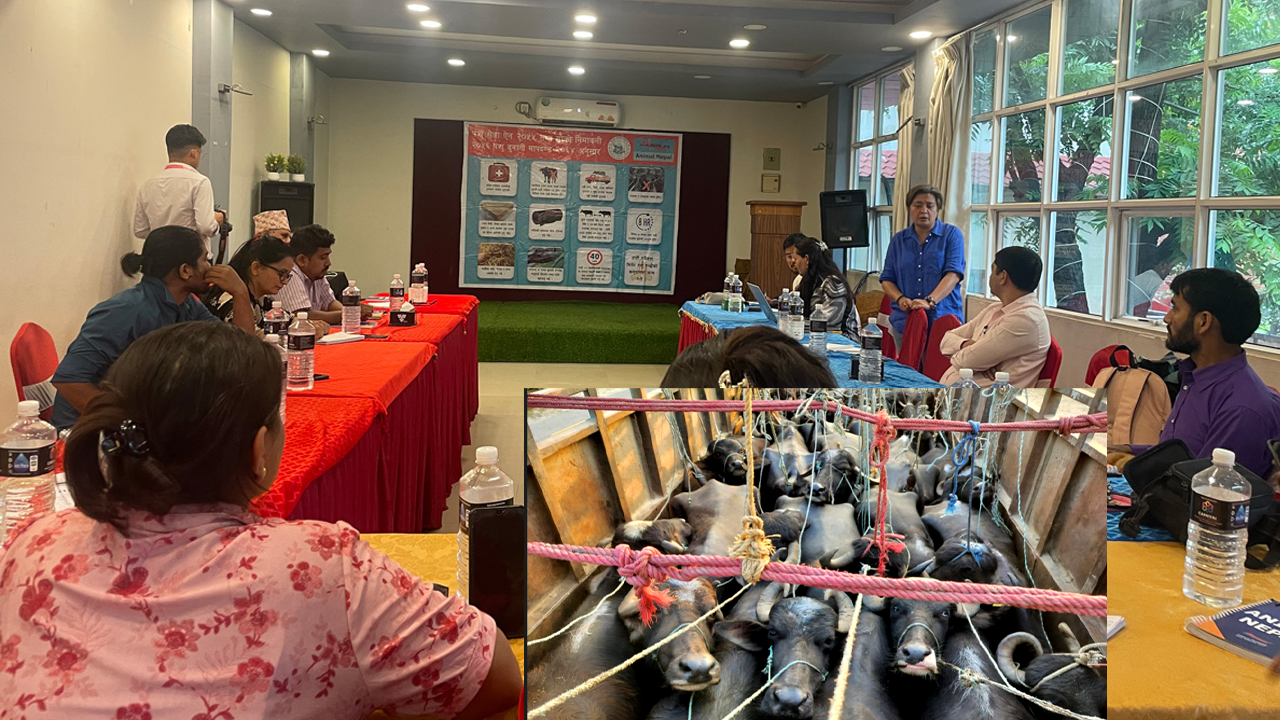
Kathmandu,14 June 2024: Animal Nepal has strongly emphasized the effective implementation of the’Livestock Transportation Standards 2064 (2007), Cage-Free Campaign, and Animal Welfare Act, stating that the issue of animal welfare has remained largely neglected.
During an interaction program organized on Friday, Program Coordinator Ms. Sulakshana Rana expressed concern over the poor enforcement of the ‘Livestock Transportation Standards’ even after 18 years since their inception. She highlighted that due to non-compliance by transportation service providers, animals continue to suffer severe mistreatment. Ms. Rana stressed the importance of ensuring every living being’s right to live freely and without cruelty.
Ms.Rana cleared,”It has been 18 years since the 11-point standard for animal transportation was prepared. If this standard was adopted in practice, the health of the buffaloes pulled in the truck would not have been seen.”
In her remarks, Ms. Rana elaborated on Animal Nepal’s current strategic focus on three key areas: livestock transportation, the cage-free campaign, and the animal welfare act. She stated that a lack of public awareness around animal welfare has significantly contributed to the failure of enforcing transportation standards.
Animal Nepal’s experience also indicates that cruelty toward animals is common not just during transportation but also at trading sites. The physical effects of such mistreatment not only harm the animals but can also contaminate the meat, directly affecting human health.
According to existing standards, animals should not be kept in vehicles for more than eight hours. The transport vehicle must be equipped with grass, straw, and feed, and animals must be allowed to rest and be given food and water during transit.
The regulations also mandate that every vehicle transporting animals must carry a first-aid box. Animals with different physical builds should not be transported together, and calves must not be mixed with adult cattle. Furthermore, animals’ noses and tails must not be tied, and the vehicle sides should be padded with foam to prevent injury from impact. The space allocated per animal within the vehicle should range between 0.84 to 1.27 meters.
Despite these provisions, Ms. Rana noted that although only around 20 animals should be transported per truck, up to 32 animals are often crammed in. She criticized this as a clear violation of the law. Ms. Rana also mentioned that Animal Nepal is advocating for the cessation of live animal transportation and the development of viable alternatives.
In support of this cause, a petition with 5,000 signatures is being submitted to the government. Many other Stakeholders also say that, since the 11-point standards issued by the government in 2064 are limited to paper, animals are being transported in a cruel manner.
Comments